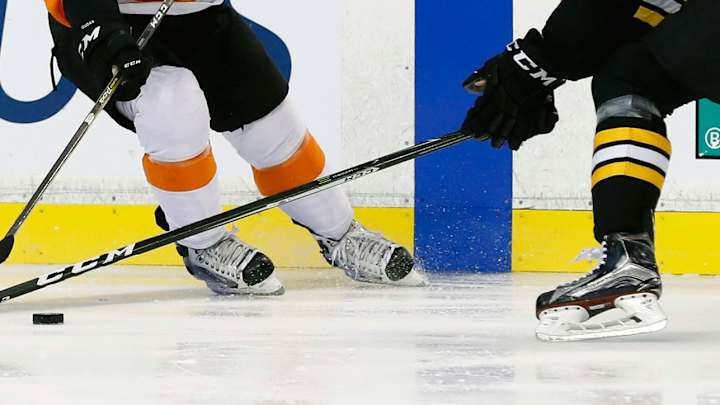NHL Board of Governors Approve Rule Change to Penalize Failed Offside Challenge

The NHL has a clear message to coaches starting this season: Don't challenge an offside call unless you are really, really sure.
At times last season, coaches challenged on the off chance a goal would get called back or to at least give players a breather because all it cost was a timeout. That is expected to change because a failed offside challenge will instead result in a penalty as the league tries to get the coach's challenge closer to what it was intended to be.
The NHL's Board of Governors gave final approval for the rule change Wednesday, replacing the lost timeout for a failed offside challenge with a two-minute minor penalty.
Last season, the second with coach's challenges for offside and goaltender interference, there were 117 challenges for offside, 78 of which were upheld and 39 overturned. That's a big increase from 2015-16 when there were 88 offside challenges, 53 upheld and 35 overturned.
Ex-NHL Enforcer Georges Laraque: Penguins Going to White House is 'an Embarassment'
''We're in effect trying to discourage using the coach's challenge on offside unless you're really 100 percent certain that you're going to win because it was a blown call,'' Commissioner Gary Bettman said. ''The coach's challenge was really intended to focus on glaring errors. And by imposing a two-minute penalty if you're wrong, it should limit the number of challenges to those instances where there's a glaring error.''
It's still not perfect because a coach who wants to take a chance can still claim goalie interference in some instances. And there's still the concern that challenges take too long to figure out, but the league hopes fewer unneeded reviews make for a positive step forward.
Here are some other rule changes or points of emphasis this season:
NO TIMEOUT AFTER ICING
Since 2005, teams have been unable to make line changes after icing the puck, with the design of creating some extra offense from fatigue. Coaches got around the rule by calling timeout to provide players some extra rest, but now that won't be allowed.
''That's consistent with the original intent of the icing rule that there was to be no substitution by the team that iced the puck,'' Bettman said. ''I think saying what we intended, namely if you iced the puck because you're tired, you're not going to get a break. I think that works well.''
Anaheim Ducks center Ryan Getzlaf doesn't think it'll cut down on icing but sees one place where the rule change will have an effect.
''The strategy's going to come on the offensive side,'' Getzlaf said. ''As soon as those pucks are iced, you're going to see coaches put out their top lines - much like they do now, but probably to a little bit stronger extent knowing that they can't call a timeout.''
FACEOFF VIOLATIONS
This isn't a rule change, but officials will be calling players for not obeying the markings around faceoff circles. It was a frequent penalty in the preseason because faceoffs are a haven for Dale Hunter's old adage of, ''If you ain't cheating, you ain't trying.''
Director of officiating Stephen Walkom said the goal is to get closer to the clean faceoffs from the late 1990s when the markings were first put in and make it safer for players and linesmen.
''Over time, the rule slowly eroded to where you have players using their hands, basically banging heads over the dots, encroaching so much on the faceoff that they're putting the linesman in danger of being slew-footed on almost every drop, going down on one knee,'' Walkom said. ''We're not trying to reinvent the rule. We're just trying to reclaim some ice relative to the faceoff so that we can have a fair and competitive faceoff.''
Washington Capitals center Lars Eller hopes it levels the playing field.
''I think it'll be a disadvantage to guys that like to get their skate in there to use as it a part of winning their faceoff because now you have to have it so far back that it's going to be hard,'' said Eller, who called himself a stick-only guy 80 percent of the time. ''Usually the guys that like to get the skate in there, they would be way over that red line. You have to keep your foot back. I think it's more of an advantage for guys that really only use their stick to win the faceoffs.''
Face-off Violations, Slashing Are Points of Emphasis for NHL in Preseason
SLASHING
Broken fingers to Calgary's Johnny Gaudreau and Ottawa's Marc Methot last season because of slashes prompted concern that the problem had gotten out of hand. On-ice officials and the league office will be taking a closer look at and calling more slashes in and around the hands to reduce injuries and improve the quality of play.
The league is always sort of looking to make the game safer and they're always looking to, in recent years, generate a little bit more offense,'' Carolina Hurricanes forward Jeff Skinner said. ''That's going to maybe create more scoring chances, if it doesn't create more power plays.''
---
Follow Hockey Writer Stephen Whyno on Twitter at http://www.twitter.com/SWhyno
---
For more AP NHL coverage: https://apnews.com/tag/NHLhockey
